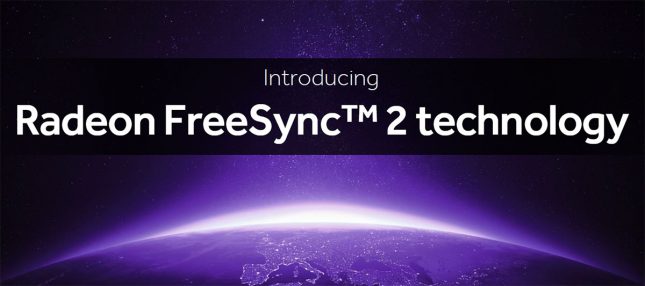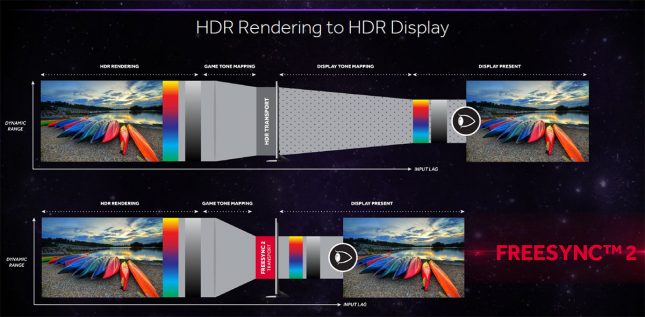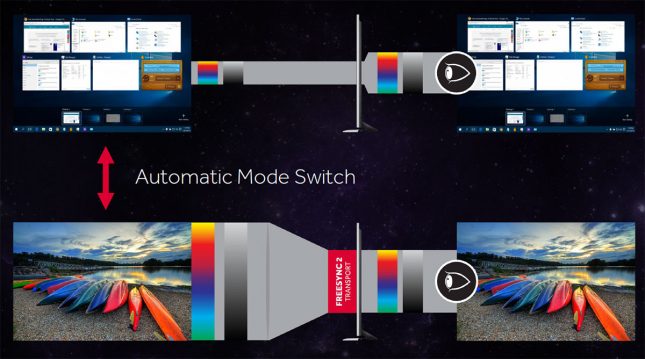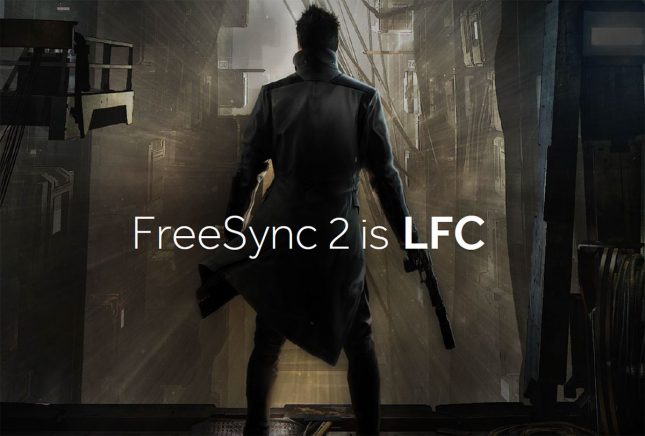AMD FreeSync 2 Technology Adds Support For HDR and LFC Gaming
AMD’s Radeon Technologies Group announced FreeSync 2 Technology this morning (check out the PR here) that and adds support for HDR displays as well as Low Framerate Compensation (LFC). AMD FreeSync was first introduced in March 2015 and in less than two years 121 FreeSync PC Displays have been released versus only 18 NVIDIA G-SYNC PC Displays. AMD wants to keep that momentum by adding new technologies as needed and they feel that adding HDR and LFC support was enough to call this FreeSync 2.

FreeSync 2 is important for HDR gaming as it reduces input lag because the monitor doesnt have to spend any time tone mapping the HDR output. This is because Radeon Software and the Radeon GPU is handling that task because it already knows the specifications for the FreeSync 2 display that is being used. This means that the monitor doesn’t have to do any processing as the incoming display data is already tuned to the specific monitor. So, if you have a FreeSync 2 display and a Radeon Graphics card you’ll have an improved visual experience automatically when you launch a game. The Radeon software will know you have a FreeSync 2 setup and will switch the monitor’s mode to get its full capabilities (brightness, contrast and color space) when you launch an HDR game title. Once you are done gaming and go back to the desktop or switch to another application the software will switch you back to the regular viewing mode.
Most monitors today are build around the sRGB color space, but monitors in the gaming market are quickly moving over to HDR panels that support technologies like HDR10 and Dolby Vision aim to offer up to 8x more than the sRGB color space. Radeon FreeSync 2 technology offers over 2x the brightness and color volume over sRGB. HDR10 and Dolby Vision can be laggy for gaming since the display has to do the tone mapping, so FreeSync 2 looks like a great way to optimize these technologies for gaming. The input lag on many HDR displays isn’t an issue for movies as they are running 30 FPS or lower, but when you game at above 60 FPS you’ll like that reduced input lag! All FreeSync-compatible Radeon GPUs will support FreeSync 2 technology, including the Radeon RX series GPUs based on the Polaris architecture which also supports DisplayPort HBR3 and enables UltraHD resolution beyond 60Hz.
All FreeSync 2 monitors must support LFC is a relatively new feature of Radeon Software that effectively extends the refresh rate range of many AMD FreeSync technology-compatible displays. This means that when the framerate drops below the minimum refresh rate of the monitor that you’ll still have smooth gameplay and that it won’t be choppy. LFC comes automatically enabled when a FreeSync display is being used enabling pristine smooth gaming down to 30 FPS or less.
Is that enough for AMD to come up with FreeSync 2? We aren’t sure as now there will be FreeSync and FreeSync 2 branded gaming displays in the marketplace. Expect to see FreeSync 2 gaming monitors later this year and



